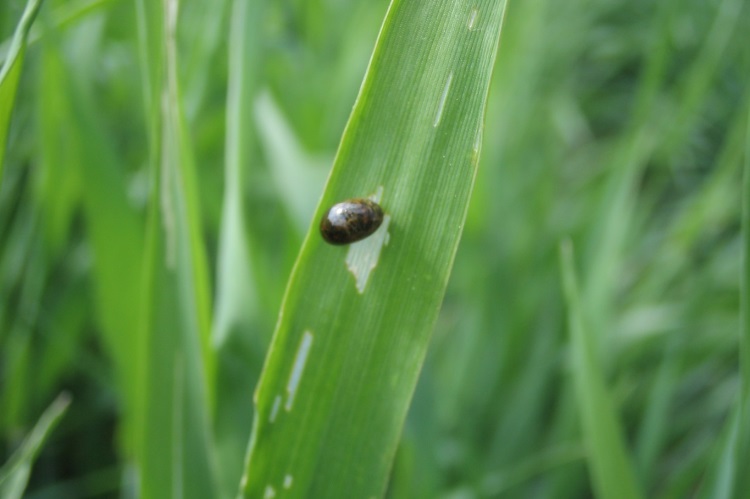Crop Health Updates - June 2019
General Comments
This season has further illustrated the vagaries and challenges of the Scottish weather. Temperatures have dropped back this week to barely into double figures and heavy showers which are, for the most part, very welcome. Rivers, loch and reservoirs are at historically low levels so water will still be scarce even if we now lapse into a wet summer. That said, conditions in the north are becoming sufficiently wet that traffic over fields is challenging. Further south the challenge is getting spray intervals rather than getting over the field as such. As ever where spray intervals get stretched and spray timings starts to go awry there are difficulties with weed control, growth regulation and with diseases like yellow rust nipping into gaps. Keep an eye on the weather forecast and make the best use of ‘gaps’ in the weather for spraying operations.
Crops are moving along well – the warm spell and recent rain keeping most growers and crops happy. Unfortunately, the recent weather has favoured pests and disease as well, so the first signs of ramularia are creeping into crops, and aphids have been flying around and bring virus threats with them in spring barley and seed potatoes. The gate is shutting for fungicide treatments on winter barley, but other cereals and spring-sown crops will need treatments over the next week or two.
The recent rain has posed problems for some growers, with missed sprays and some crops suffering from waterlogging. One consequence of the rain may well be increased disease such as ramularia in spring barley, plus the risk of disease and mycotoxins on the heads of cereals.
Pests in spring oilseed rape
There is a threat from pollen beetles this season, as they start to move off the winter crop at the end of flowering. Spring oilseed rape at green-yellow bud is the key risk timing. One pollen beetle per plant can often cause enough damage to reduce yield. Read more here.
Check for aphids in winter wheat
Check the ears of wheat up to GS73 for aphids. If two-thirds of heads are infested then consider an aphicide. Bear in mind that grain aphids may well be resistant to pyrethroid aphicides. Read more here.
Potato blight starts to fight dirty
The challenges in managing potato blight have always been the main focus on in-season fungicide programmes for potato growers. As a mobile and aggressive pathogen, it has readily adapted itself to new varieties over the years and we’ve been used to seeing it shift and slide. But in recent seasons the emergence of particularly worrying strains has been a feature and last season’s data confirms that the rise of three different issues in the new blight strains being commonly detected. Read more here.
Cereal leaf beetle
The slimy grubs of cereal leaf beetle have been reported on crops. The grub stage eats strips out of leaves. Most crops are usually able to cope with the damage, but if the flag leaf is being badly grazed then yield can be affected. Read more here.
Saddle gall midge
Saddle gall midge is potentially a serious pest of continuous cereals such as wheat, barley and rye (but not oats), and have been seen in Scottish crops occasionally over the last few seasons. Read more here.
Managing ear disease
Scotland’s long day lengths aid the high yield potential of wheat crops, and retention of green leaf area is key in maximising crop potential. Fungicides applied to the ears of wheat, therefore, have a dual purpose as they top up earlier foliar disease management but also help to reduce the risk of ear diseases. Read more here.
Wet weather making spray timing 'challenging'
The rainfall over recent weeks started out as a welcome relief to earlier dry conditions - but, inevitably, the prolonged period of showers has knocked some spray plans awry. In winter wheat crops, it has impacted on the ability to get the all-important flag leaf spray on in good time, but for the most part, delays were not too serious and initial plans were just deployed a little late. Though, for some crops, the delays were longer. Read more here.
Winter Wheat
Crops are growing away from earlier leaf scorches and stresses, some arising from T1 sprays when temperatures were still fluctuating wildly. The weather continues to challenge best-laid plans and some T2 flag leaf sprays were delayed by rain. Disease levels are fortunately still low, but we do have reports of yellow rust in some crops where spray intervals allowed its ingress. Read more here.
Spring Barley
The risk of ramularia is enhanced by ample leaf wetness from emergence up until ear emergence so the current wet weather is compensating for the earlier dry weather. Read more here.
Grain Stores
Ensuring stores are clean and free of pests is essential to prevent any problems after all the hard work of growing and harvesting the crop. Read more here.
Sign up to the FAS newsletter
Receive updates on news, events and publications from Scotland’s Farm Advisory Service












